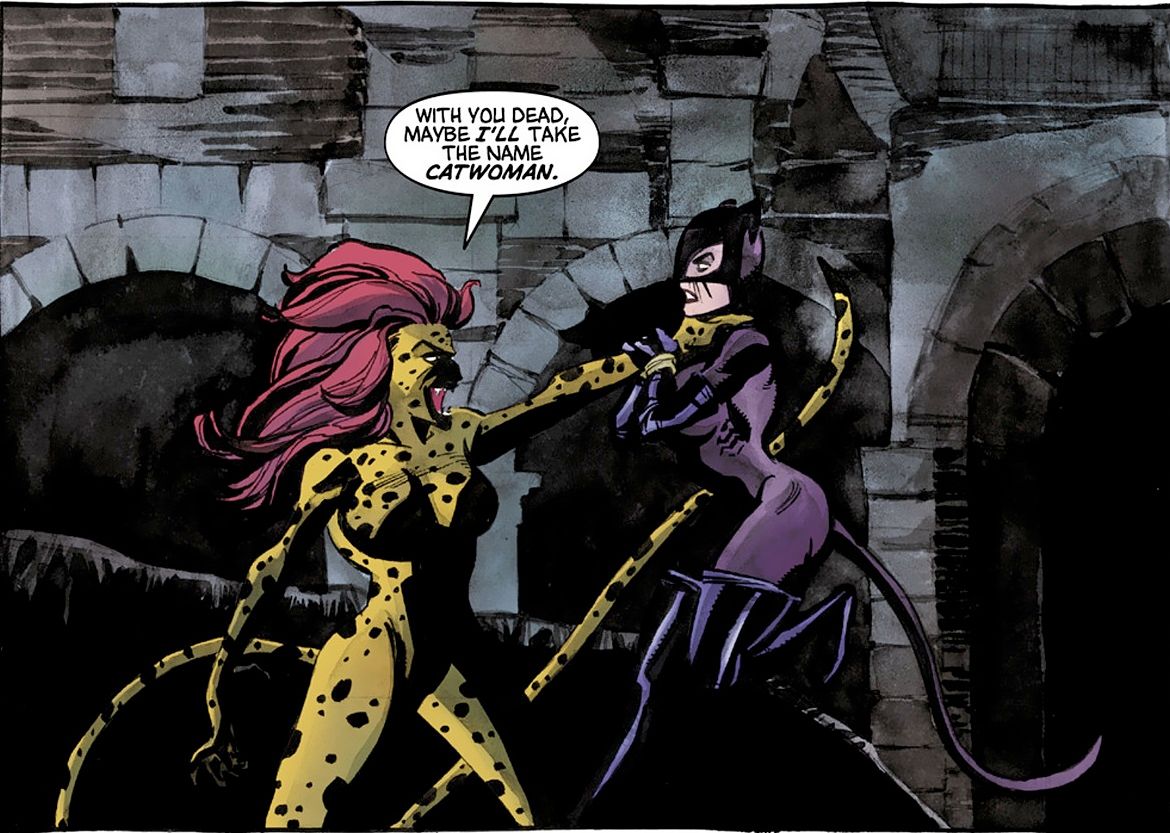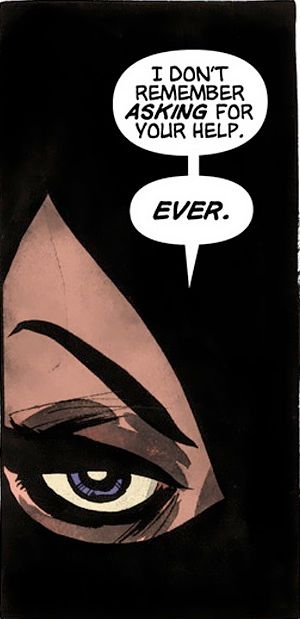I often find myself in arguments about Catwoman: who played the best Selina Kyle in movies and who writes her the best in comics. I talk about her a lot. I mean, a lot. I’ve developed a really deep love for her as a character because she has never been easily pinned down or definable. She holds a special place for me because as a female character, she holds a lot of power for progressive and offensive representation and thought. She is not easily definable as good or bad, and this tension provides the room for her to become something more than just Batman's love interest or Gotham's ultimate femme fatale.
While I've felt this way about Catwoman in many different instances, Jeph Loeb and Tim Sale's Catwoman: When In Rome really hits the nail on the head for me. It raises -- whether intentionally or not -- all these questions about Selina's identity, but also the role of Catwoman as a feminist character in a world rife with problems when it comes to writing and representing women. Warning, I'm absolutely going to be spoiling the heck out of this run.
Still with me? Okay, good.
'Kay, so here goes: When In Rome is about Selina’s search for self -- but also parallels a search for feminist representation of self. I'm not saying this is Loeb and Sale's intent with the character and their run with her, but I am saying that it can be read this way. After all, gender studies and feminist analyses matter all the more when a work isn't explicitly dealing with the ideas. I say this because the way we treat gender and gendered interactions shows up any time we write or read about humans interacting with each other. We cannot escape this: if humans are involved, so is gender.
So back to plot: in When In Rome Selina flies to Rome to search down the answers to who she is. This story comes thematically on the heels of Long Halloween, and placed relatively early in the time line of Selina's life. It starts with Catwoman having a dream, a nightmare of fighting in Gotham and being saved by Batman. Right from the get go Loeb establishes that Selina wants nothing to do with the Dark Knight; importantly, that she she definitely does not want to be saved from him. This run is about her finding herself and she absolutely does not want to be defined in relative terms to Batman. She is not his damsel, she is not his lover. But more on this in a moment.
It's important to note now that there are only two other female characters in the whole run. And they both look like Selina Kyle. They don't just look like her, they are thematic plays on the two manifests of her identity. There's Cheetah, whose "taken the cat thing way too far," a sultry villainness that is all foe and represents the Catwoman aspect of Selina Kyle. Then there's Louisa Falcone, visually an older version of our titular character, who represents the unknown personal aspect, the Selina Kyle part of Catwoman.
And this is very fitting, since the run is about Selina’s search to find her origins. She believes Louisa to be her mother, the person who can unlock the secrets of her past. But this quest also functions as a symbolic searching for the Mother. In literature, gender studies often speaks to the feminist pursuit of a Mother, rather than a Father, in order for female writers and characters to find their voice. In a world dominated by men, and where women are relegated to the fridge to further male’s storylines/characterizations, Selina’s quest in Rome signals a search for a Mother, a figure who can represent a past and a light through the darkness. It is important that this search happens in Rome, a place untouched by masked and caped crusaders. This is the only setting for Catwoman to find and understand herself because here she can, temporarily, exist without and outside of the norms and standards of Gotham (a microcosm for the entire DC universe).
Except she can never fully escape the rules of Gotham and the typical representations that come with it, so When In Rome finds Catwoman haunted by spectres of Gotham. Her villains, while for the most part new characters, use the weapons of the Gotham baddies: Joker's poison, Scarecrow's fear gas, and Mr. Freeze's freeze-ray. While trying to find her identity and carve out her own space, she must constantly deal with remnants of a world she has temporarily left. In feminist undertakings, we cannot simply create anew, we must deal with the old, as well. Thematically and symbolically, the Bat-villains chosen to haunt Selina echo her pursuit for self: in the nightmare that begins When In Rome, it is Two-Face who shoots her after her triumphant victory over the Joker, signalling that even if Catwoman proves to be the stronger character, she still must deal with her dual selves and the tensions between reconciling both halves. And Catwoman very much is a woman caught in the middle: not just the middle ground between being a hero and a foe, but the middle ground of being a tired cliché of a female superhero and a progressive, feminist depiction.
Even the fear of intimacy with Batman is predicated on a fear of unveiling/revealing one’s true self. While Selina was initially the one who wanted them to open themselves to each other, she spends the entirety of When In Rome resisting this very intimacy with him. Batman represents her fears and the tensions surrounding them: she wants to know who she is, to reveal herself, but she can’t, because she’s afraid. There’s room to carve out your own identity in liminal, ambigious spaces. This tenuous, undefined space is exactly the space that Selina inhabits in the Batman universe: caught between good and evil, hero and foe, Catwoman straddles the line, dips her toes on both sides, but ultimately never settles in one category for very long.
Beyond this, Selina’s nightmares (as she calls them) of Batman symbolically work to highlight the feminist fear of female characters always being the damsel in distress. Selina is actively fighting against this form of characterization, since it is often the most visible trope available to women in comics. Selina resists this at every turn in her search to know herself.
At the end of the run, when she says she stole from Falcone to carve out a place for herself in society -- a place she deserves -- she is speaking to the ways in which female characters have to fight for their respected positions. Her identity, her life, is of her own creation and which, this is important, she stole from her possible father. The father figure here is important because it goes back to what I was saying about the feminist search for the Mother: female characters often have to claim their representation and position by force from an existing masculine framework.
So why does all of this matter? Because it goes to show that sometimes what's important is the journey -- the process -- and not necessarily the end result. When In Rome ends with Selina rejecting the Father. She goes to Falcone's grave, tells him that she stole from him to make her own name, and that she doesn't need him. He is silenced, and she is allowed to live as she is. And the important realization here is that the way she will be from now on, knowing more of herself, is exactly the same way she was before: a character caught between being good and bad, and all the more powerful because of this undefinable ambiguity. Holding the ring (literally the one ring to rule them all), she acknowledges the power she holds, and rather than revel in being holier than thou as a hero, she smirks at her own potential. She can do what she wants, unrestricted by rules and definitions. And it is in this very undefinable aspect that I find Catwoman's feminism powerful -- once we abolish all tired tropes and definitions of what it means to be "good" or "bad" we can have a more robust representation of characters that exist outside of tired binary thought.



